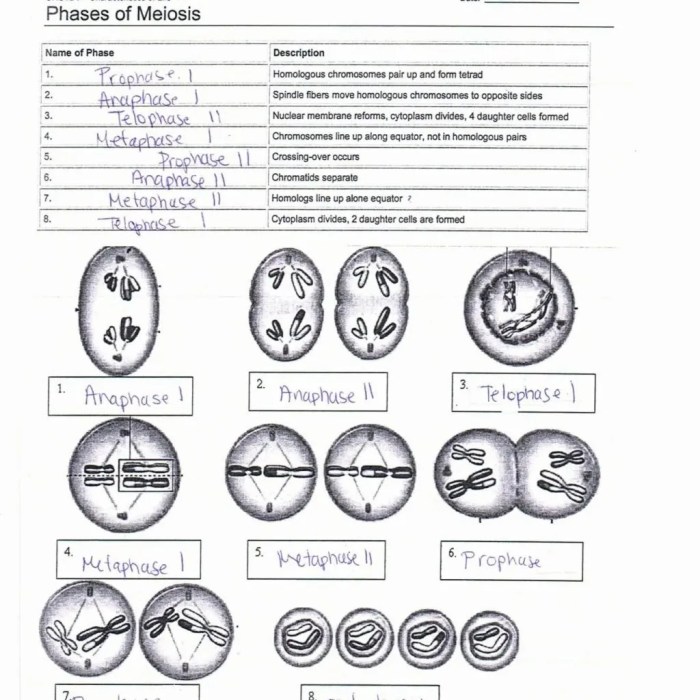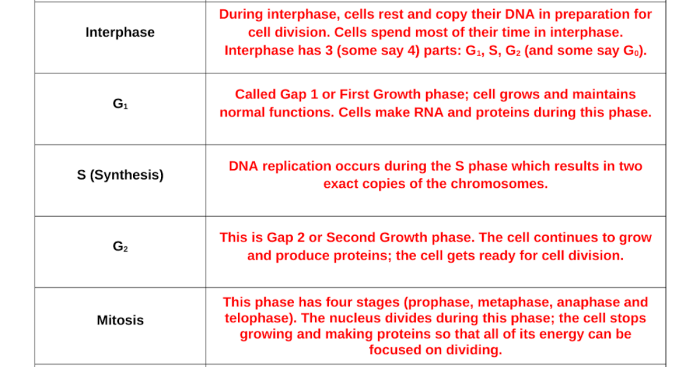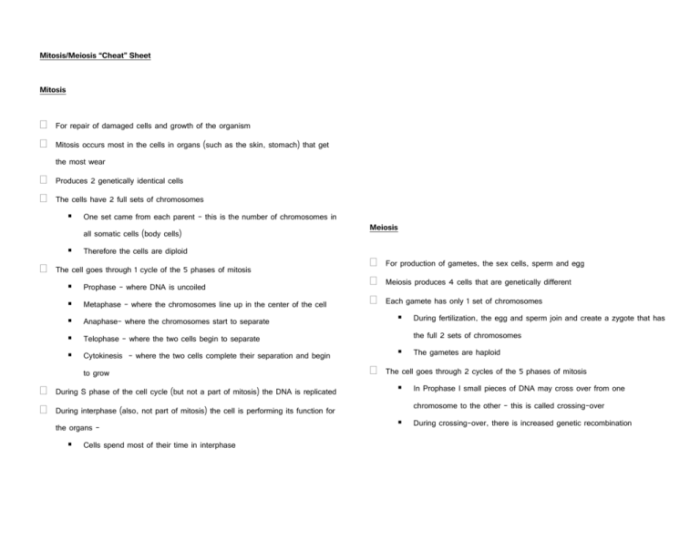The Cheat Sheet Meiosis Gizmo Answer Key PDF provides a comprehensive overview of the process of meiosis, offering a valuable resource for students and educators alike. This guide delves into the intricacies of meiosis, exploring its stages, genetic implications, and applications in educational settings.
Meiosis, a specialized cell division process, plays a crucial role in sexual reproduction and genetic diversity. The Cheat Sheet Meiosis Gizmo Answer Key PDF unravels the complexities of meiosis, shedding light on the mechanisms that ensure the faithful transmission of genetic information from one generation to the next.
Meiosis Gizmo Overview: Cheat Sheet Meiosis Gizmo Answer Key Pdf
The Meiosis Gizmo is an interactive simulation that allows students to explore the process of meiosis in a virtual environment. The Gizmo provides a detailed and realistic representation of the different stages of meiosis, including prophase I, metaphase I, anaphase I, telophase I, prophase II, metaphase II, anaphase II, and telophase II.
Students can use the Gizmo to manipulate chromosomes, observe the process of crossing over, and track the movement of chromosomes during each stage of meiosis.
The Gizmo also includes a number of tools that allow students to explore the genetic consequences of meiosis. These tools include a chromosome viewer, a gene map, and a pedigree chart. Students can use these tools to investigate the relationship between genotype and phenotype, and to predict the inheritance of genetic traits.
Meiosis Process Analysis

| Stage | Chromosome Behavior | Synapsis and Crossing Over | Independent Assortment of Chromosomes |
|---|---|---|---|
| Prophase I | Chromosomes condense and become visible. Homologous chromosomes pair up and undergo crossing over. | Synapsis occurs, and homologous chromosomes exchange genetic material through crossing over. | N/A |
| Metaphase I | Homologous chromosomes line up at the equator of the cell. | N/A | N/A |
| Anaphase I | Homologous chromosomes separate and move to opposite poles of the cell. | N/A | N/A |
| Telophase I | Two daughter cells are formed, each with half the number of chromosomes as the parent cell. | N/A | N/A |
| Prophase II | Chromosomes condense again. | N/A | N/A |
| Metaphase II | Chromosomes line up at the equator of the cell. | N/A | N/A |
| Anaphase II | Sister chromatids separate and move to opposite poles of the cell. | N/A | N/A |
| Telophase II | Four daughter cells are formed, each with half the number of chromosomes as the parent cell. | N/A | Independent assortment of chromosomes occurs during metaphase I and anaphase I. |
Genetic Variation and Meiosis
Meiosis is a key process in genetic variation. Crossing over and independent assortment of chromosomes during meiosis result in the production of gametes (eggs and sperm) that are genetically unique. This genetic variation is essential for the evolution of populations, as it allows for new combinations of alleles to be created.
For example, if a population of rabbits has a gene for fur color that has two alleles, one for brown fur and one for white fur, meiosis can produce gametes with either the brown fur allele or the white fur allele.
When these gametes combine during fertilization, they can produce offspring with brown fur, white fur, or a combination of both (heterozygous).
This genetic variation is important for the evolution of populations because it allows for the survival of the fittest individuals. In a changing environment, individuals with certain alleles may be more likely to survive and reproduce than individuals with other alleles.
Over time, this can lead to a change in the frequency of alleles in a population, and ultimately to the evolution of new species.
Meiosis Errors and Consequences

Errors during meiosis can lead to a number of genetic disorders. These disorders can be caused by the presence of extra or missing chromosomes, or by the rearrangement of chromosomes.
One of the most common errors during meiosis is nondisjunction. Nondisjunction occurs when homologous chromosomes or sister chromatids fail to separate during meiosis. This can result in gametes that have an extra or missing chromosome. If these gametes are fertilized, they can produce offspring with genetic disorders such as Down syndrome, Turner syndrome, and Klinefelter syndrome.
Another type of error that can occur during meiosis is translocation. Translocation occurs when two chromosomes break and exchange genetic material. This can result in gametes that have a combination of two different chromosomes. If these gametes are fertilized, they can produce offspring with genetic disorders such as Roberts syndrome and Down syndrome.
There are a number of mechanisms in place to prevent or correct errors during meiosis. These mechanisms include checkpoints that ensure that chromosomes are properly aligned before they separate, and repair mechanisms that can fix damaged chromosomes.
Applications of Meiosis Gizmo

The Meiosis Gizmo can be used in educational settings to help students understand the process of meiosis and its implications. The Gizmo can be used to:
- Visualize the different stages of meiosis
- Manipulate chromosomes to observe the effects of crossing over and independent assortment
- Track the movement of chromosomes during each stage of meiosis
- Investigate the relationship between genotype and phenotype
- Predict the inheritance of genetic traits
- Explore the genetic consequences of meiosis errors
The Meiosis Gizmo is a valuable tool for teaching and learning about meiosis. It can help students to visualize the process of meiosis, understand the genetic consequences of meiosis, and explore the role of meiosis in evolution.
Top FAQs
What is the purpose of meiosis?
Meiosis is a specialized cell division process that reduces the chromosome number by half, producing gametes (sex cells) with a haploid set of chromosomes.
How does crossing over contribute to genetic variation?
Crossing over is a genetic recombination event that occurs during meiosis, resulting in the exchange of genetic material between homologous chromosomes. This process generates new combinations of alleles, increasing genetic diversity within a population.
What are the potential errors that can occur during meiosis?
Errors during meiosis can lead to aneuploidy, a condition in which cells have an abnormal number of chromosomes. These errors can result in genetic disorders and developmental abnormalities.